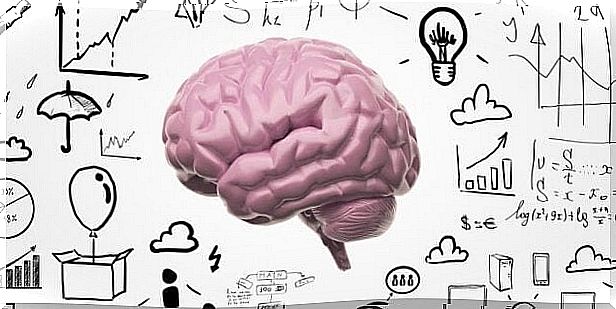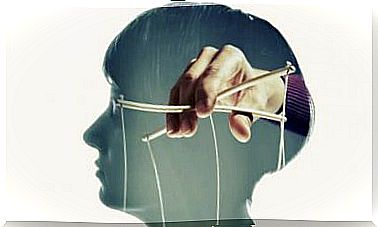Our Memory: How Does It Really Work?

Our brains are responsible for two basic abilities: thinking and acting. These two abilities require being able to learn (preserve) and remember (produce) the information that the brain requests. This is our memory.
The great success in neuroscience in recent years has helped us understand some of the mechanisms that work when these abilities are used. So we talk above all about when we create new memories. So how does our memory work and what role does our brain play in the whole thing?
Both sci-fi and the media have presented information in an incorrect way and thus created many myths and incorrect perspectives regarding our central nervous system. Everything from the brain being like a computer to seeing it as a structure in plastic with unlimited capacity. We now know that this is not entirely true. Thanks to the latest research, we know more about how these small magic cells called neurons, or nerve cells, are created and communicate.
Our emotions are completely linked to our memory. The results of several studies suggest that events that have affected our emotions in a positive or negative way provide clearer memories than those that do not affect us emotionally. In this way, the emotional memory is a result of certain memories being created in this way.
Our memory requires various psychological and neurobiological processes that are essential to be able to create new memories. In short, the way in which memories are imprinted on the result of the storage of information, accompanied by alarm or warning signals through which our memories anchor themselves.
The short- and long-term memory is created simultaneously and stored in the hippocampus and prefrontal cortex, respectively. The area of the brain where short-term memories are stored had already been found. But that was not the case with long-term memory.
A study led by researchers from the Picower Institute of Learning and Memorization of the Massachusetts Institute of Technology in Cambridge (USA) has for the first time revealed where and how our brain creates long-term memories.
As the co-author of the study, Mark Morrissey, wants to show, memories are formed in parallel and then take different paths. Those in the prefrontal cortex become stronger and those in the hippocampus become weaker.
What is new about this study is that it has been shown that communication between the prefrontal cortex and the hippocampus is very important. If the circuit that connects these two areas of the brain were to break, the engram of the cortex would not mature enough. In other words, no long-term memories would be stored.

Memories are essential for our development and survival. Especially when it comes to our negative memories that warn us about the risks we take if we act in a similar way that made us suffer earlier. So much so that the brain must preserve long-term memories to keep us alive and give meaning to suffering.
The results of Mark Morrissey’s study show that memory neurons are found in three areas of the brain: in the hippocampus, in the prefrontal cortex and in the amygdala. The latter is the part of the brain involved in the creation of emotional memories.
This contradicts many previous theories about the merging of memories. It shows that short- and long-term memory is not created simultaneously in the hippocampus and prefrontal cortex, but is formed in the hippocampus and then passed on to the cerebral cortex.
Neurons work on the basis of communication. The brain uses very few brain cells to remember things that it sees. This contradicts what has been believed so far – that the brain uses a large network of neurons to store memories. Research claims that neurons act as thought cells, capable of specializing in certain memories that the brain has previously selected.

This discovery could help people with brain damage to “artificially” recreate memory. This could also help those with diseases such as Alzheimer’s. At the same time, the results suggest that there is some type of brain code. This code plays an important role when it comes to our ability to observe and how the brain goes about creating the abstract memory.
In addition to the field of neurology, this discovery will clearly help in the development of artificial intelligence and the nervous system. It will improve the design of highly technological equipment that we use to store and process information on a daily basis.
In the 50’s, it was a patient named Henry Molaison who had his hippocampus injured in connection with an operation that was done to control his epileptic seizures. Because of this, Molaison could not recreate new memories after the operation. However, he kept the memories he had before being rolled into the operating room. Because of this event, people began to understand the important role of the hippocampus when it comes to creating new long-term memories.

This case suggested that long-term memories of specific events kept themselves somewhere outside the hippocampus. Researchers believe that this place is the prefrontal cortex which is the part of the brain that is responsible for cognitive functions, such as the ability to plan or pay attention.
This shows that the common theories that memory is merged may turn out to be incorrect. New studies will be needed to determine if the memories disappear completely from the cells in the hippocampus or if forgetfulness is just a problem in retrieving information.
The amygdala also plays an important role in determining how to preserve our memories. The connection to memory becomes stronger when we associate memory with emotions and make the situation easier to remember. The amygdala is responsible for how important memory becomes to us depending on what feeling the memory brings. It also affects which details of a particular memory become more imprinted than others.
The amygdala has a protective function. This explains why some people are very afraid of dogs (which is something that their emotional memory handles) but do not remember the situation when the fear was founded (which comes from their narrative memory). The reason for this is probably that the stress was very high when the event with the animals occurred or the fact that the first event has been followed by several others.
This type of memory – emotional memory – is what allows us to remember things that we associate with positive or negative events.
When the amygdala is activated by the special stimulus that creates fear, these events become extra strongly imprinted in the memory. We remember things that happen to us extra clearly when strong emotions are aroused at the same time. Emotional activation is what makes memories more easily consolidated.
We thus have ways to some of the most relevant discoveries made in recent years regarding our memory and how it goes when we create memories. However, the answers that researchers are currently advocating are far from definitive. Because these are new discoveries, we have not been able to use everything they could to improve the lives of the people who suffer from memory problems.









